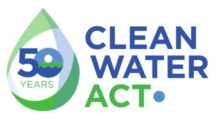
State Water Board Member Nichole Morgan.
Ms. Morgan is Guest Editor of the Clean Water magazine’s special edition celebrating the 50th anniversary of the Clean Water Act. View the online edition here.
When the Clean Water Act was passed, rivers were catching on fire and there was little in the way of Federal regulations in place to protect the environment for future generations.
2022 marks the 50th anniversary of the Clean Water Act (CWA). It is amazing to think that just 50 years ago, in 1972, growing public awareness of the importance of water quality led to sweeping amendments to the Federal Water Pollution Control Act (enacted in 1948).
The amended law became known as the Clean Water Act. Due to California’s leadership, sections of Clean Water Act were based on the 1969 Porter-Cologne Water Quality Control Act.
Under Federal regulations and California’s pioneering Porter-Cologne Act, the State Water Resources Control Board (State Water Board) and nine Regional Water Quality Control Boards have regulatory responsibility for protecting the water quality of nearly 1.6 million acres of lakes, 1.3 million acres of bays and estuaries, 211,000 miles of rivers and streams, and about 1,100 miles of exquisite California coastline.
Over the last 50 years we have made great strides towards achieving a vision of abundant clean water for people to use and to protect the environment to sustain California’s future.
As we look toward the next 50 years, we will need to continue to be environmental leaders. By working together and adapting along the way we can ensure our water is allocated and used properly, efficiently, and equitably.
With the enactment of the CWA, funding was provided to states through the Clean Water Grant Program. With this funding, wastewater systems throughout the nation were built to treat waste before it enters rivers and the ocean.
 Now 50 years later, the wastewater treatment systems built in California during the 1970s and 1980s have been continually upgraded to further protect our surface waters. In addition, water recycling facilities are helping us become more resilient to climate change and protect our water resources for future generations.
Now 50 years later, the wastewater treatment systems built in California during the 1970s and 1980s have been continually upgraded to further protect our surface waters. In addition, water recycling facilities are helping us become more resilient to climate change and protect our water resources for future generations.
The Clean Water State Revolving Fund is contributing approximately $1.0 billion annually towards infrastructure improvements statewide. In 2021, the State Legislature committed an additional $1.3 billion to drinking water and wastewater infrastructure improvements, $200 million to groundwater and recycled water, $100 million to PFAS, and $10 million for emergency drought projects.
We are a pivotal moment, with these historic investments, collaboration, and partnerships we can make a leap forward in preparing for climate change, building resiliency, and equitably delivering access to safe and affordable drinking water and sanitation for all Californians.
This edition of the CWEA magazine highlights how California is working together to build resiliency to address climate change; introducing the next generation to the water quality profession to create a pipeline of workers entering the field; and maximizes partnerships and investments to protect the environment for future generations.